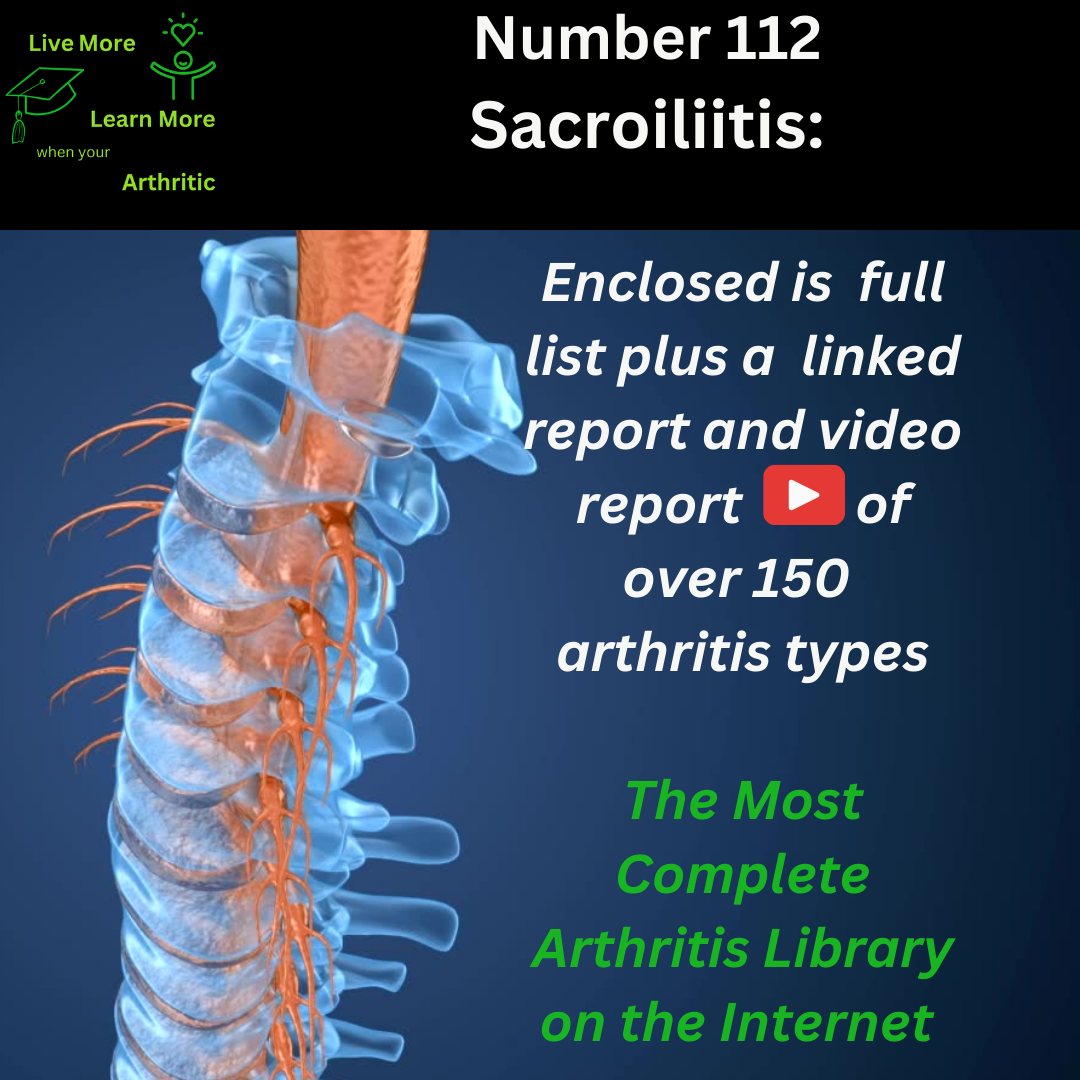
Sacroiliitis: Number 112 of around 150 types of Arthritis
Delving Deeper into Sacroiliitis
Sacroiliitis is a condition characterized by inflammation of the sacroiliac joints, which are located at the base of the spine where the sacrum (the triangular bone at the bottom of the spine) meets the ilium bones of the pelvis. This inflammation can lead to a range of symptoms and potential complications affecting mobility and overall quality of life.
The sacroiliac joints are essential for transferring weight and forces between the upper body and the legs during activities like walking, running, and standing. In sacroiliitis, inflammation of these joints can cause pain and stiffness, primarily in the lower back and buttocks. The pain may worsen with prolonged sitting or standing and can radiate down into the thighs. Some individuals may experience difficulty bending, twisting, or lifting due to the discomfort associated with sacroiliitis.
Causes and Triggers
Sacroiliitis can have various causes, including autoimmune conditions such as ankylosing spondylitis, which is a type of inflammatory arthritis that primarily affects the spine. Infection-related sacroiliitis can occur due to bacterial or viral infections that directly affect the sacroiliac joints. Trauma, such as a fall or injury to the pelvis, can also lead to inflammation of the sacroiliac joints. Additionally, wear and tear over time (degenerative changes) can contribute to the development of sacroiliitis, especially in older individuals.
Onset and Risk Factors
The onset of sacroiliitis can occur at any age, but it commonly presents in young to middle-aged adults. Men are more frequently affected than women, particularly in cases associated with ankylosing spondylitis. Family history plays a significant role in the risk of developing sacroiliitis, especially in autoimmune-related forms of the condition. Certain genetic markers, such as the HLA-B27 gene, are strongly associated with increased susceptibility to sacroiliitis and related autoimmune diseases.
Inflammation and Complications
Inflammation in sacroiliitis results from the immune system mistakenly attacking the tissues of the sacroiliac joints. This inflammatory process leads to pain, swelling, and stiffness. Chronic inflammation can cause structural damage to the sacroiliac joints, potentially resulting in fusion (ankylosis) of the joint surfaces. Ankylosis can severely limit mobility and flexibility, impacting daily activities and reducing quality of life.
Quality of Life and Proactive Management
Proactive management of sacroiliitis involves a comprehensive approach aimed at reducing inflammation, managing pain, and preserving joint function. Treatment strategies may include nonsteroidal anti-inflammatory drugs (NSAIDs) to alleviate pain and inflammation, disease-modifying antirheumatic drugs (DMARDs) for autoimmune-related sacroiliitis, and physical therapy to improve joint mobility and strengthen supporting muscles. In severe cases, biologic therapies targeting specific inflammatory pathways may be recommended.
 Possible Complications and Interconnected Conditions
Possible Complications and Interconnected Conditions
Complications of untreated sacroiliitis can extend beyond joint inflammation and may include spinal involvement, such as the development of ankylosing spondylitis with spinal fusion. Individuals with sacroiliitis should be aware of related autoimmune conditions like psoriatic arthritis, which can affect multiple joints including the sacroiliac joints and may coexist with skin psoriasis. Inflammatory bowel diseases (such as Crohn’s disease and ulcerative colitis) are also interconnected with sacroiliitis, as they share similar underlying immune system dysregulation.
In summary, sacroiliitis is a complex inflammatory condition that requires early diagnosis and proactive management to prevent complications and optimize long-term outcomes. By addressing inflammation, managing symptoms, and promoting joint health through appropriate treatment and lifestyle modifications, individuals with sacroiliitis can achieve a higher quality of life and maintain functional independence.


